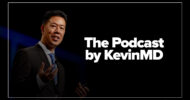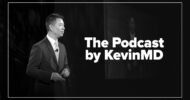![]() This article is sponsored by The Nuance Dragon Ambient eXperience (DAX).
This article is sponsored by The Nuance Dragon Ambient eXperience (DAX).
The COVID-19 pandemic has triggered seismic shifts in health care delivery. Never before has the health care system mobilized to handle a massive surge in one type of illness while bringing so many other services to an abrupt standstill. Elective surgeries and procedures were canceled or delayed. Regular and non-urgent care was shifted to telehealth whenever possible to focus resources on pandemic response and minimize unnecessary clinician and patient exposure. More broadly, the changes created a new reality that highlighted our collective need to improve physician wellness and patient-provider relationships, displace uncertainty and anxiety with trust, and make the technical, regulatory, financial, and practical changes necessary for better health care experiences.
All of those factors came together in the dramatic expansion of telehealth services. Technology made it possible and practical to deliver patient care remotely while ensuring safety. Regulations changed and placed reimbursements for virtual visits on par with in-person exams. Telehealth platform companies became infused with investment, federal funds authorized in the CARES Act spurred adoption, and health systems moved forward with lightning speed implementations.
For all of the impressive gains achieved under extraordinary circumstances, system inefficiencies still abound, including in telehealth itself. Providers and patients have embraced telehealth, and its place in health care delivery is likely permanent. But documentation and workflow challenges that existed long before the pandemic remain.
The rise of telehealth: Health care delivery model shifts quickly
Telehealth visits in the U.S. have skyrocketed. Providers have reported 50x to 175x increases in the number of telehealth visits compared with pre-COVID-19 levels, and 57 percent of providers now view telehealth more favorably than they did before the pandemic. But the safety risks, financial pressures, and considerable reductions in patient volumes during the pandemic, plus the loss of 1.4 million health care jobs in April alone, only added to the severity of physician burnout and the urgency to reduce physicians’ administrative workloads.
Telehealth challenges
If physicians document during the encounter, their attention is necessarily divided between the computer and the patient. If they leave documentation until later, they are likely to forget some details of the encounter when completing the required documentation outside of clinical hours. With remote and at-home work now predominant, “pajama time” is becoming the norm for completing documentation and administrative tasks.
Telehealth also is rife with workflow inefficiencies: providers are performing tasks that nurses typically do during in-person visits; patients show up late because they can’t find the link or have difficulty logging in, and scheduling must be done manually in two separate systems – the EHR and the telehealth or conferencing platform.
There can be a lot of dis-integrated tech-toggling too. Providers use various disparate telehealth or teleconferencing, EHR, and documentation solutions, each with workflows, security requirements, training levels, and interoperability that vary by organization and provider. Physicians need a collection of devices to conduct telehealth visits. They have to log into the telehealth platform on one device and use another to input information into the EHR (often their laptop). Their telehealth “platform” device is usually their mobile phone or tablet.
However, telehealth’s at-scale adoption clearly shows that the combination of need, urgency, and a will to overcome challenges can drive the rapid adoption of practical and useful innovations not only for safety and care delivery but for addressing physician burnout now.
Overcoming provider burnout
How can health care administrators, IT executives, and clinicians make telehealth visits more efficient and satisfying for providers and patients alike, and address physician burnout? The answer can be found in advanced AI- and speech-driven ambient clinical intelligence (ACI) solutions deployed in health systems across the country. Adopting ACI systems to address physician burnout before the pandemic is now accelerating to meet the documentation and workflow needs of both virtual and exam room patient encounters. Even physicians skeptical by the failed promises of past technologies embrace ACI systems as the practical and effective solution they have wanted.
The Nuance Dragon Ambient eXperience (DAX) is leading ACI innovation and adoption. The Nuance DAX mobile application can be used for either in-person and telehealth visits with any EHR, video conferencing, or telehealth application. Nuance DAX reduces time spent documenting care and alleviates provider burnout by automatically capturing and contextualizing every word of the patient encounter in real-time at the point of care. It then generates high-quality clinical notes for physician review and addition to the EHR. It can capture details that might otherwise be missed, resulting in complete documentation, better patient care, and optimized physician reimbursements. The Nuance DAX solution frees clinicians to focus on their patients, give them back time in their day, and empowers them to practice at the top of their license.
Nuance DAX is also integrated with Microsoft Teams and available to physicians from within their Teams workflow for real-time documentation as well as scheduling and provider communication and coordination.
The Nuance DAX solution makes it possible to forget the tech-toggling and reduces documentation burdens no matter how or where care is being provided. It turns the rhetoric of alleviating burnout and improving provider satisfaction and patient experiences into a practical day-to-day reality.
Jared Pelo is CMIO, Dragon Ambient eXperience, Nuance Communications.
Image credit: Nuance Communications























![A pediatrician explains the real danger of food perfectionism [PODCAST]](https://kevinmd.com/wp-content/uploads/The-Podcast-by-KevinMD-WideScreen-3000-px-4-190x100.jpg)
![Rebuilding the backbone of health care [PODCAST]](https://kevinmd.com/wp-content/uploads/Design-3-190x100.jpg)
